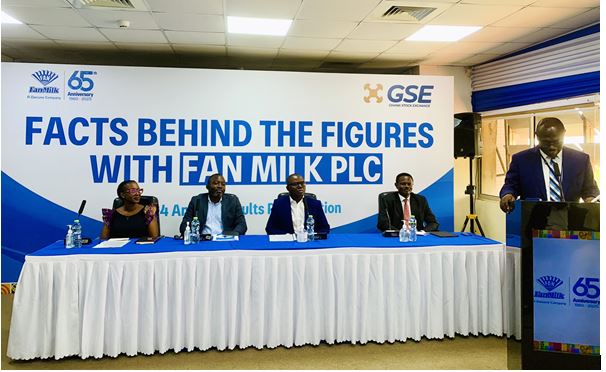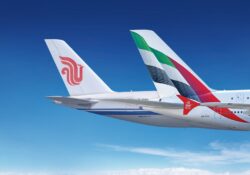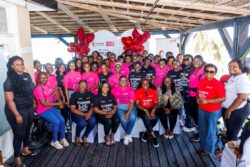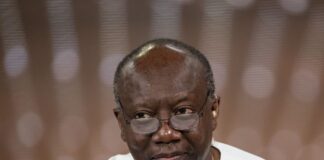… achieves 75 percent automation
By Kingsley Webora TANKEH
FanMilk Ghana recorded a net profit of GH¢24.10million in Q1-2025 – an increase of 66 percent compared to GH¢14.53million in the same period last year.
The company also achieved 75 percent automation of its manufacturing processes.
Speaking at the ‘Facts Behind the Figures’ session organised by the Ghana Stock Exchange, Managing Director-FanMilk Lionel Parent said:
“We believe that having strong financials is not just about profitability, it’s also about purpose. It is about creating values for shareholders, touching lives and building a sustainable future,” further stressing the company’s commitment to society.
The company’s unique bicycle selling model creates opportunities to enrich the lives of Ghanaians by contributing to poverty alleviation, providing jobs for more than 8,000 bicycle, push-cart and head-pan vendors recruited and managed by its 1,000 plus agents across the country.
Overall, FANMILK has created direct employment to over 1,000 Ghanaians with more than 10,000 indirect employees across Ghana.
The Head of Finance Controlling at FanMilk, Kplom Fiogome, indicated that the company is on course to achieving 100 percent local sourcing of raw materials to cushion the company from vagaries of the exchange market and also reduce pressure on the country’s foreign reserves.
He however expressed difficulty in sourcing some of their ingredients in country.
“A large portion of our ingredients today is milk whey powder and you cannot get it in Ghana. That is the challenging bit,” he noted.
“We are getting close to 50 percent local sourcing. We used to source our cocoa for from outside. You will see that we had an agreement with fairAfrik recently. So, now we do that locally. It is all about making sure that we change the ratio in terms of our import to local sourcing and we on the journey,” he added.
“This year marks the 65th anniversary of Fanmilk Ghana. We are proud to share the story behind our numbers – a story of resilience, a story of innovation and the unwavering commitment to our employees and partners,” the MD shared.
“We hope Fanmilk restores the pride it has always enjoyed. As we take you through our performance, we hope to provide not only insights about our financials but also give you a much deeper understanding of the strategic direction driving our transformation journey,” he said.
Total revenue surged by 57 percent to GH¢242.18million compared to GH¢154.59million in Q1 2024.
Total assets also burgeoned to GH¢650.34million in Q1-2025 compared to GH¢636.65million in Q1 2024 while liabilities stood at GH¢353.51million, up from GH¢393.03million for the previous year.
“The company is doing rigorous community engagement in rural areas to improve revenue,” Mr. Fiogome noted.
FanMilk’s frozen yogurt and drinkable yogurt products are sold directly to shoppers in more than 10,000 stores at modern trade stores, petrol station forecourts, pharmacies, schools and neighborhood stores.
From bankruptcy to West Africa’s favourite
FanMilk started in 1960 as Ghana Milk Company with eight shareholders to produce pasteurised and fresh milk products.
However, the company filed for bankruptcy two years down the line in 1962 because sales dipped drastically.
This was because consumption of fresh milk products was not the habit of Ghanaians, who rather preferred to buy caramelised tinned milk imported primarily from Holland, leading to huge losses and forcing the Ghana Milk Company to declare bankruptcy in 1962.
However, a concerned employee proposed a fantastic idea to diversify into the production of chocolate milk and ice cream products and leverage the unique vendors on a bicycle selling model. This birthed the popular FANYOGO, FANICE and FANCHOCO brands.
Within 18 months, the company’s sales fortunes improved and it gradually expanded operations into Nigeria, Ivory Coast, Benin, Togo and Burkina Faso.
FanMilk is a founding member of the Ghana Stock Exchange, originally listed in November 1990 when the stock exchange started trading.










